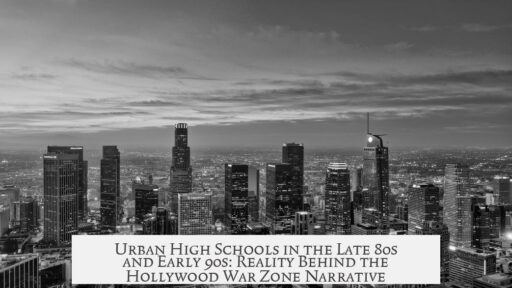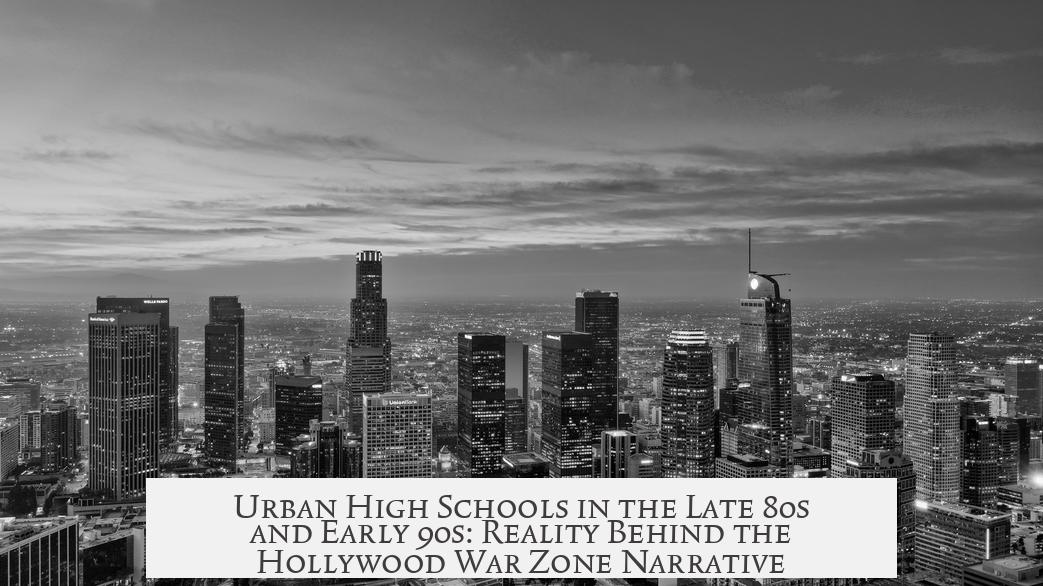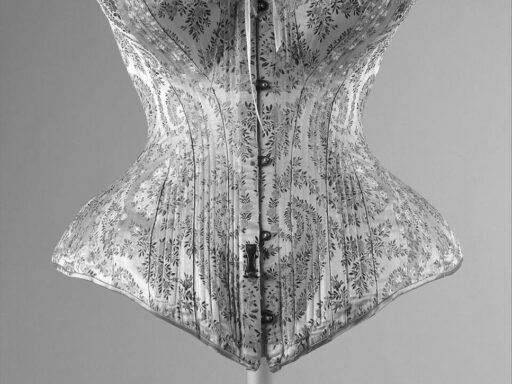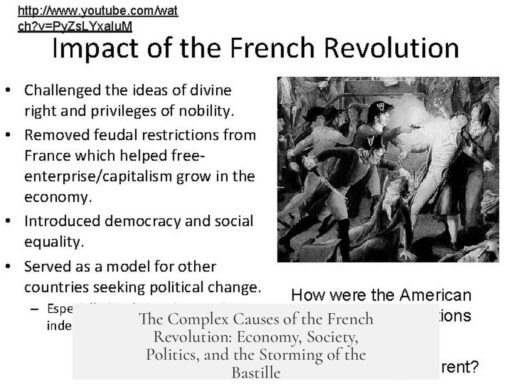Movies like ‘Lean on Me’ and ‘The Substitute’ portray late-80s/early-90s urban high schools as chaotic and violent environments, but this depiction largely exaggerates the reality. While some urban schools faced challenges such as resource scarcity and occasional violence, most were staffed by committed educators and served students eager to learn. The portrayal of urban schools as “anarchic war zones” reflects a mix of political messaging, racial biases, and cinematic dramatization rather than an accurate representation of the era’s urban education landscape.
During the post-World War II period, a population boom spurred rapid school construction, mainly in suburban areas. This led to a phenomenon called “white flight,” where many white families with resources moved to suburbs. The result was a significant demographic shift in urban schools, often leaving them with fewer financial resources and greater concentrations of students from minority groups. Despite the 1954 Brown v. Board of Education ruling intended to desegregate schools, segregation persisted in many northern cities due to housing patterns and district attendance zones.
As high school diplomas became more crucial for future success, districts enforced attendance more strictly, deploying truancy officers to ensure enrollment and compliance. Additionally, changes in special education laws in the 1970s required schools to serve all students, including those with disabilities who previously might have been excluded. Unfortunately, many schools struggled to meet these needs effectively, often passing students without ensuring mastery of fundamental skills.
Contrary to cinematic depictions, urban schools in the early 1980s were generally safe. Most were staffed by trained, dedicated adults working under difficult conditions with limited funding, serving students determined to gain an education. While some schools lacked sufficient staff or were unprepared for diverse student needs, these situations were exceptions rather than the norm.
Movies often cast adult actors in teenage roles to heighten drama. For example, in ‘Lean on Me,’ Jermaine ‘Huggy’ Hopkins and Marc Anthony played high school students in their late 20s, removing the authenticity of youthfulness. These casting choices and exaggerated behavior contributed to a skewed perception of urban youth and schools.
One real-world effect of such portrayals is the overestimation of the age and threat posed by children of color, particularly Black youth, which has been linked to harsher treatment and stereotyping. The films also carried specific political overtones. ‘Lean on Me’ echoes themes aligned with Reagan-era policies, presenting the idea that strong, often authoritarian intervention suffices to fix systemic issues in predominantly Black school districts while downplaying the need for increased funding or structural reform.
The narrative in these films that a stern principal or teacher can singlehandedly “clean up” a school is simplistic and misleading. Real-world challenges in urban education require comprehensive support, resources, and community involvement. The reality featured underfunded schools coping with a range of social and economic pressures far beyond what dramatic films portray.
‘The Substitute’ furthers harmful stereotypes by combining the trope of the troubled city school with racial fears, often pitting a white protagonist against hostile students of color. Such narratives reinforce biased ideas about urban environments and the people within them rather than exploring the complexities of urban schooling.
More broadly, these films fit within a genre that pathologizes urban school spaces as unsafe and disorderly, often with racialized undertones. This representation supports the justification for white families relocating to suburbs, asserting these areas as safer and superior. Research indicates that while some urban schools experienced violence, such incidents were not exclusive to cities; suburban and rural schools faced their own challenges.
| Aspect | Film Portrayal | Reality |
|---|---|---|
| School Environment | Violent, anarchic war zone. | Mostly safe; staffed by dedicated educators. |
| Student Behavior | Aggressive, uncontrollable teens. | Youth generally eager to learn. |
| Staffing | Tense, confrontational figures dominate. | Teachers often under-resourced but committed. |
| School Outcomes | Fixed by tough leadership alone. | Complex issues needing systemic solutions. |
| Political Messaging | Support for strong-arm policies, less funding needs. | Funding and equity remain key challenges. |
| Demographics & Representation | Exaggerated racial stereotypes; older actors. | Actual students younger; diverse student bodies. |
These films offer a distorted lens on urban education during the late 1980s and early 1990s. They reflect cultural anxieties and political stances more than the educational realities faced by urban schools and their students. Recognizing this distinction helps avoid reinforcing inaccurate stereotypes and highlights the need to appreciate the complexity behind urban schooling issues.
- Urban schools in the era were mostly safe and staffed by committed educators.
- Resource shortages and systemic racial biases posed real challenges.
- Films exaggerated violence and chaos for dramatic effect and political messaging.
- Older actors and stereotypes distorted perceptions of urban youth.
- These portrayals contributed to justifying white flight and suburban safety myths.
Urban High Schools in the Late 80s and Early 90s: War Zones or Misrepresented Backdrops?
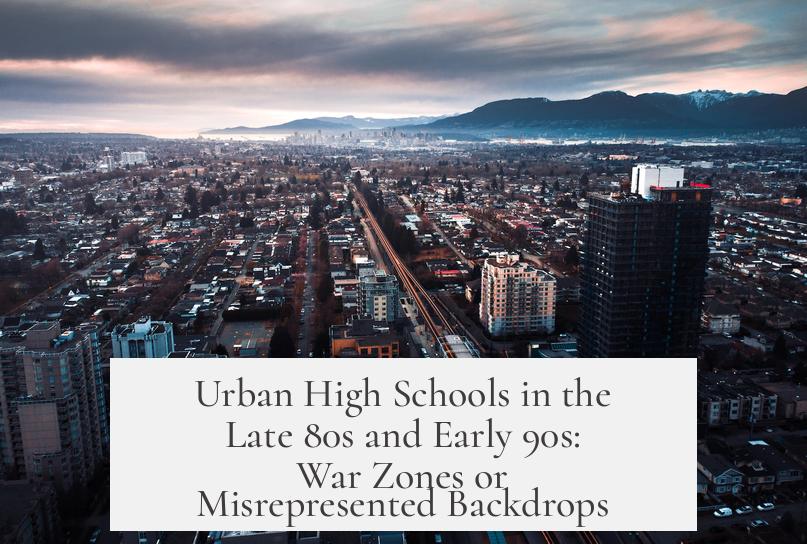
Movies like Lean on Me and The Substitute portray late-80s and early-90s urban high schools as near-anarchic battlegrounds. In reality, this dramatic depiction doesn’t hold up well against historical facts and accounts from the period. These films craft a reality filled with chaos and violence, but actual urban schools were often filled with dedicated staff and students eager to learn despite the many challenges they faced.
Let’s unpack this cinematic exaggeration, the realities behind urban schools at the time, and what motivated Hollywood to paint such a stark picture.
From Boomtown to White Flight: The Changing Face of Urban Schools
To understand the context, you have to rewind to post-World War II America. Cities expanded rapidly, and suburbs bloomed. The population boom following the war sparked a wave of new school construction in the suburbs, but this also prompted a massive demographic shift often called ‘white flight.’ White, middle-class families, with means in hand, fled city centers for these newer, supposedly safer suburbs, taking resources and political influence with them.
As a result, urban schools became increasingly segregated—not just by explicit laws but by housing and attendance zone policies that kept neighborhoods, and their schools, racially divided. Surprisingly, Brown v. Board of Education’s efforts in 1954 didn’t dismantle this segregation fully, especially in the Northeast.
Urban Schools: Tough But Mostly Safe
Contrary to film, most city schools in the early 1980s were overwhelmingly safe. Staffed by well-meaning educators doing their best with limited resources, these schools housed students who wanted to learn, not just “survive.”
Yes, some schools struggled. A few lacked sufficient staff to help students with literacy or other needs. Often, teacher demographics didn’t reflect student populations, which led to misunderstandings and racial biases. But portraying these environments as unrelenting war zones misses the mark.
What About Violence? Was It a Big Problem?
Sure, violence existed in some urban schools, just as it did, albeit less frequently, in suburban and rural schools. But does a few isolated incidents justify representing whole schools as battlegrounds? Probably not.
Actually, films like The Substitute feed into a trope—dangerous, unruly city schools against the backdrop of safe, orderly suburbs. It’s a narrative that reassures suburban audiences they took the ‘right’ path by moving out of the city. That’s a powerful message—and a problematic oversimplification.
Actors and Storytelling: Amplifying the Drama
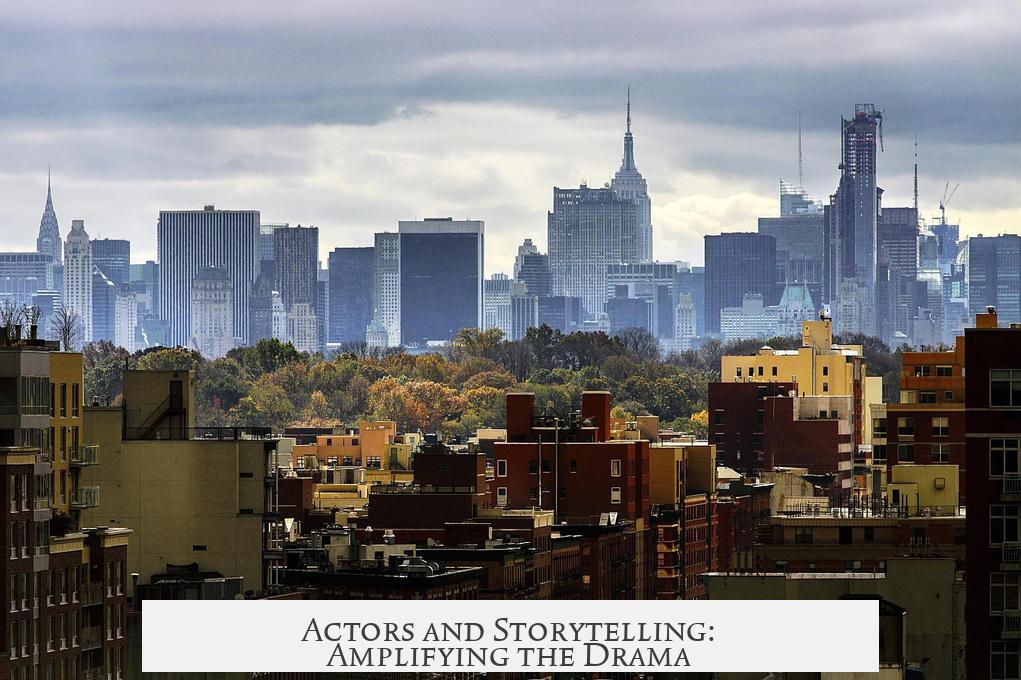
The casting choices amplify the tension. The teenagers in these films? Often played by adults in their 20s, like Marc Anthony, who was 28 when portraying a high school student. This has consequences beyond Hollywood techniques; research shows that adults tend to overestimate the ages of children of color, especially Black youth, leading to harmful biases around perceived threat and responsibility.
Films’ Political Messaging and Simplified Solutions
Lean on Me was rooted firmly in the political climate of the Reagan era. Critic Jay Carr points out that its script mirrors Reagan administration rhetoric, supplying a rationale for underfunding largely Black school districts by framing them as “bad” needing a strong hand to fix.
In reality, it wasn’t just about “tough love.” Many factors—like resource shortages, segregation, and a lack of political will—hampered these schools. The film’s message ignores the deep structural issues at play.
Special Education and Truancy: Additional Layers of Challenge
It’s also worth noting that the ‘70s and ‘80s brought new federal rules requiring schools to educate all students, including those with disabilities. Prior to that, many children deemed “too disabled” could be legally turned away. Suddenly, schools had more responsibility but not always the resources or trained staff. This made maintaining order and supporting students even more complex.
Moreover, around this time, truancy crackdowns increased to enforce school attendance strictly. Students’ lives were politicized beyond academics. It added pressure and tensions, but again, it was part of a broader social landscape, not an outright war zone.
“The Savage Enemy” and Cultural Implications
The genre itself—dangerous urban schools—reflects deeper cultural anxieties. One academic chapter titled “Controlling the Savage Enemy: Punishing the Other and Criminalizing Urban Space” dives into how films embraced tough, macho enforcers like Joe Clark (the inspiration for Lean on Me) who embodied Reagan’s strongman persona.
This served to comfort white suburban viewers, reaffirming their advantage and safety. The dramatic test score improvements in the movie? Over-simplified storytelling for sure.
What’s the Takeaway?
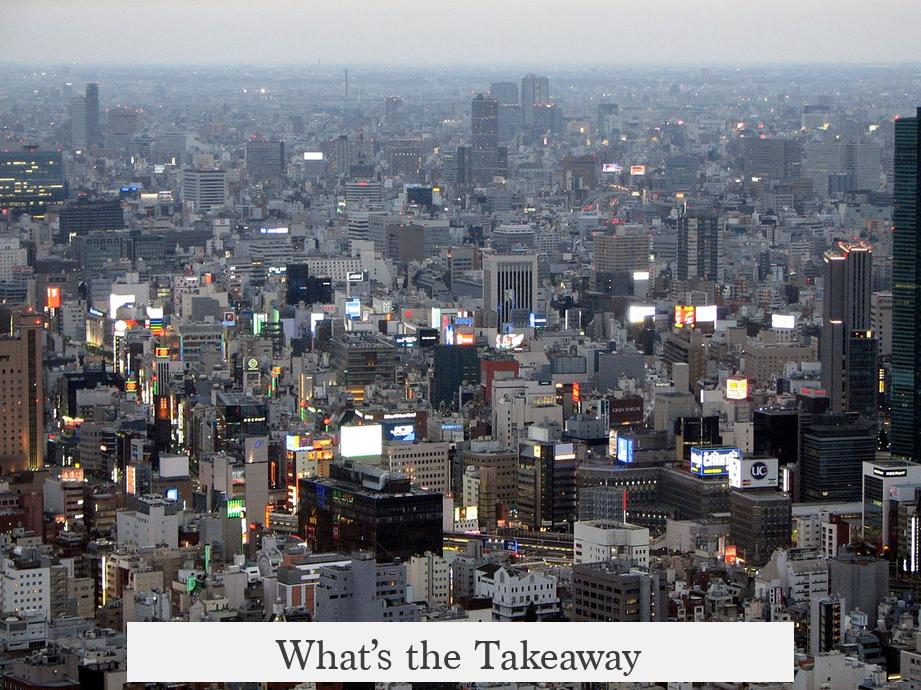
If you’re wondering whether urban high schools really resembled the violent, anarchic hellscapes portrayed in these movies, the answer is a cool, calm “no.” Hollywood chose sensationalism over nuance.
Urban schools then showed resilience amid inadequate funding, racial bias, and changing laws. Dedicated teachers and motivated students formed communities that weren’t perfect, but far from the portrayals of chaos and danger.
So next time you watch Lean on Me or The Substitute, remember it’s more fiction than documentary. The dramatic tension makes for gripping film but don’t let it skew your understanding of urban education history.
Curious about the real stories of those schools? Look for memoirs, documentaries, or reports from educators on the ground in those days—they reveal grit, hope, and complexity beyond the cinematic war zones.
Can We Learn from This Hollywood Lens?
- Recognize the power of narrative: What movies highlight or omit shapes public perception and policy.
- Question stereotypes: Are we seeing the whole picture or a trope designed to entertain or reassure?
- Acknowledge ongoing challenges: Urban schools still face hurdles—but solutions need nuance, not simplistic “firm hand” stories.
Understanding this can help us support urban education more thoughtfully today. What do you think—is Hollywood’s “dangerous school” trope still influencing us now?
Were urban high schools in the late-80s/early-90s really as violent and chaotic as shown in movies like *Lean on Me*?
No. Most urban schools were generally safe and staffed by committed educators. While some schools faced challenges like resource shortages and student struggles, portraying them as war zones was an exaggeration used for dramatic effect in films.
Did these movies accurately depict the age and behavior of urban students?
Not really. Actors playing older teens were often adults in their 20s. This contributed to a skewed perception, especially among adults, who tended to overestimate the age and threat level of students of color.
What was the political message behind films like *Lean on Me*?
These films often reflected Reagan-era views, supporting narratives that urban schools failed due to their communities and justified limited funding. They suggested that strong-handed leadership could fix problems, ignoring deeper systemic issues.
How did movies like *The Substitute* reinforce stereotypes about urban schools?
*The Substitute* used tropes of dangerous city schools and racial tension, reinforcing fears that urban schools were inherently unsafe and that white people in these environments were threatened, a common but misleading Hollywood theme.
Were problems like student violence and resource shortages unique to urban schools at the time?
No, incidents of violence occurred in rural and suburban schools as well. However, urban schools received disproportionate negative attention, partly due to racial biases and media portrayals that emphasized danger and disorder.
